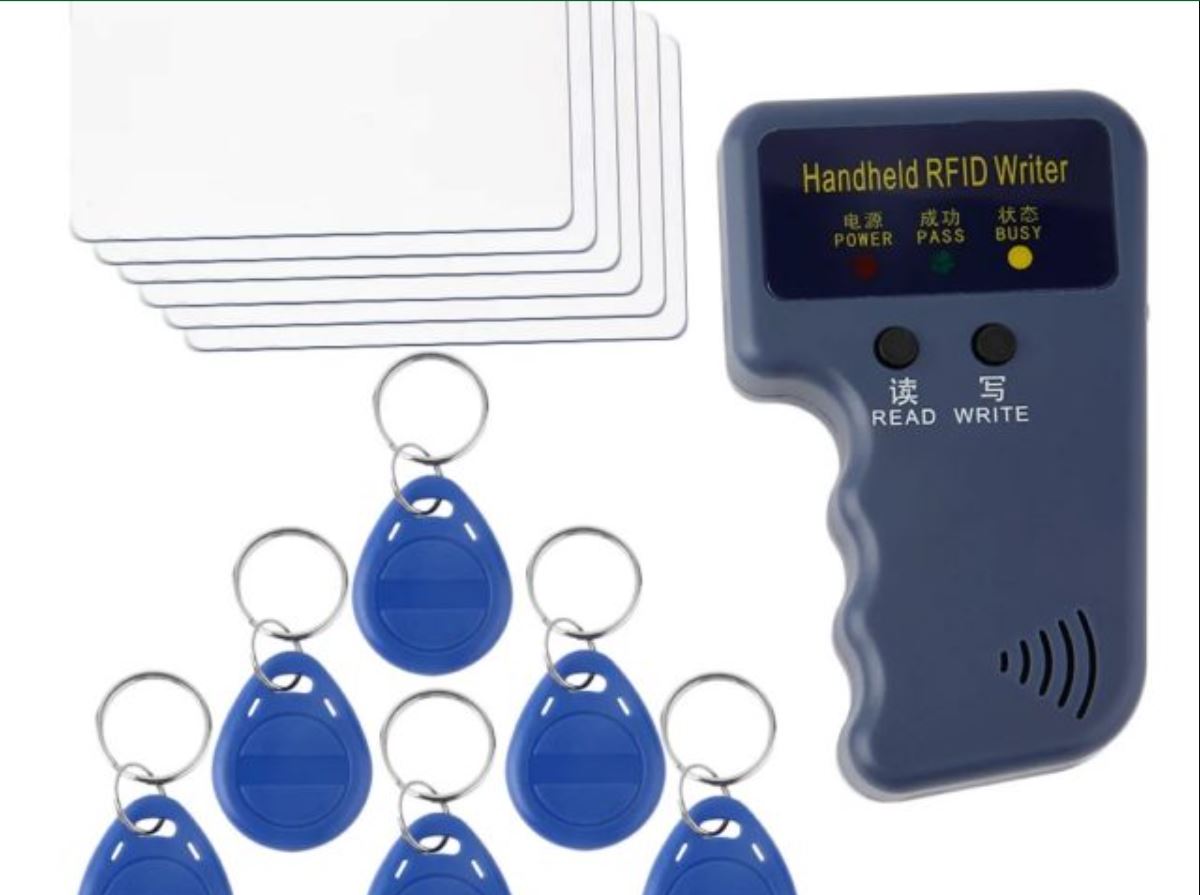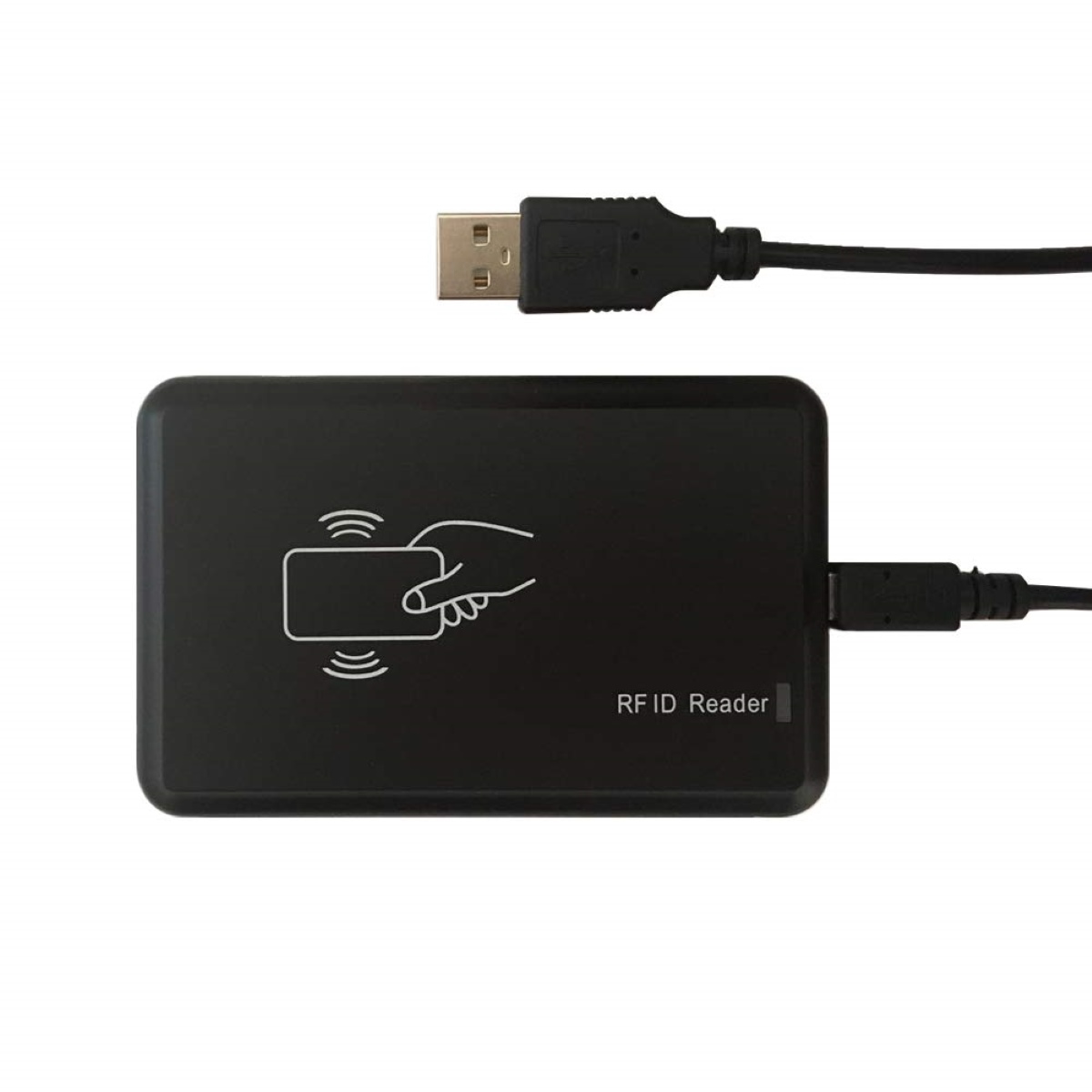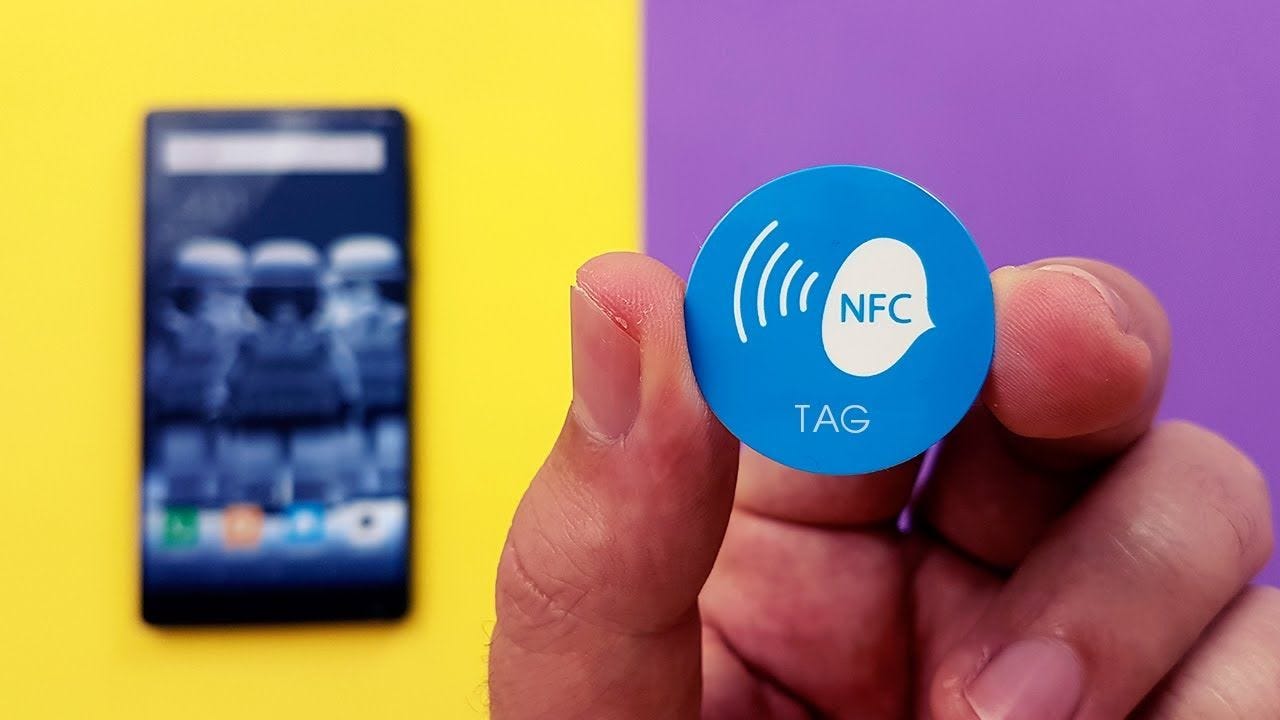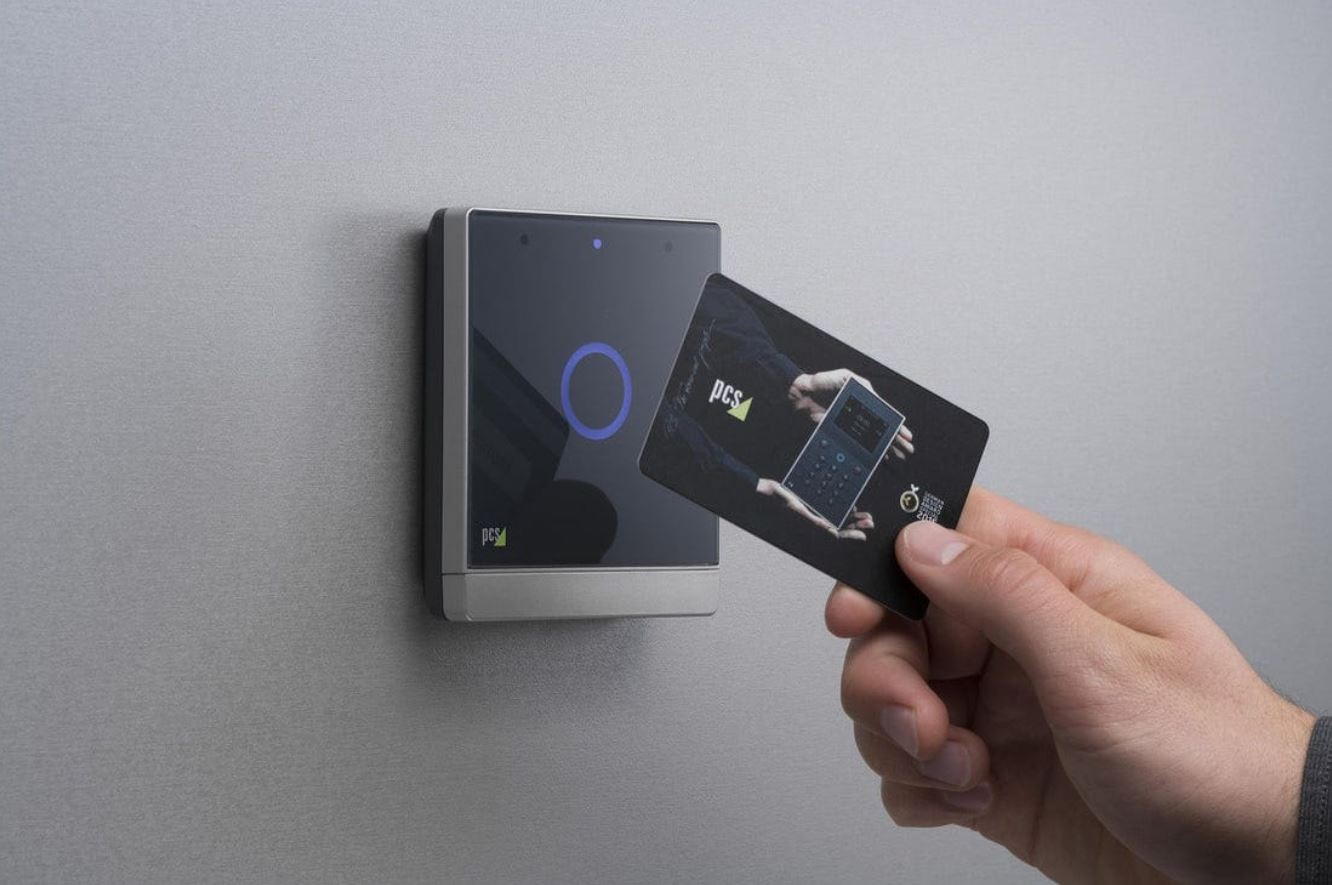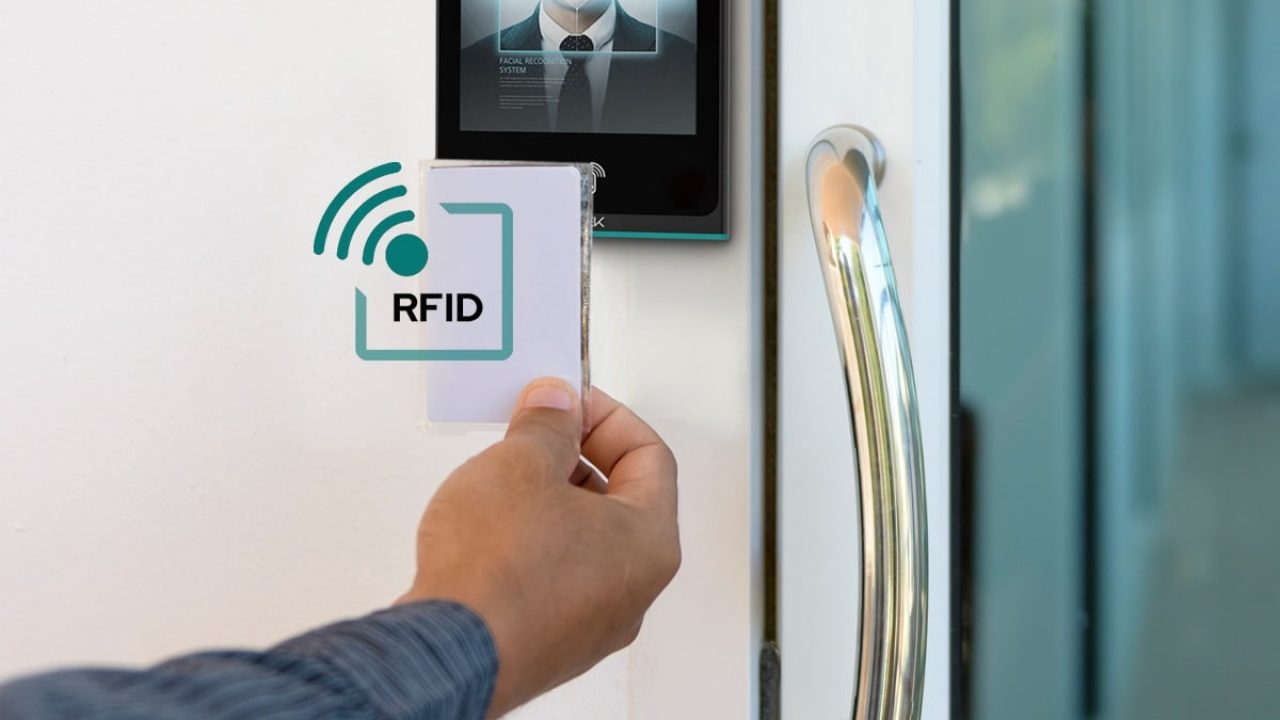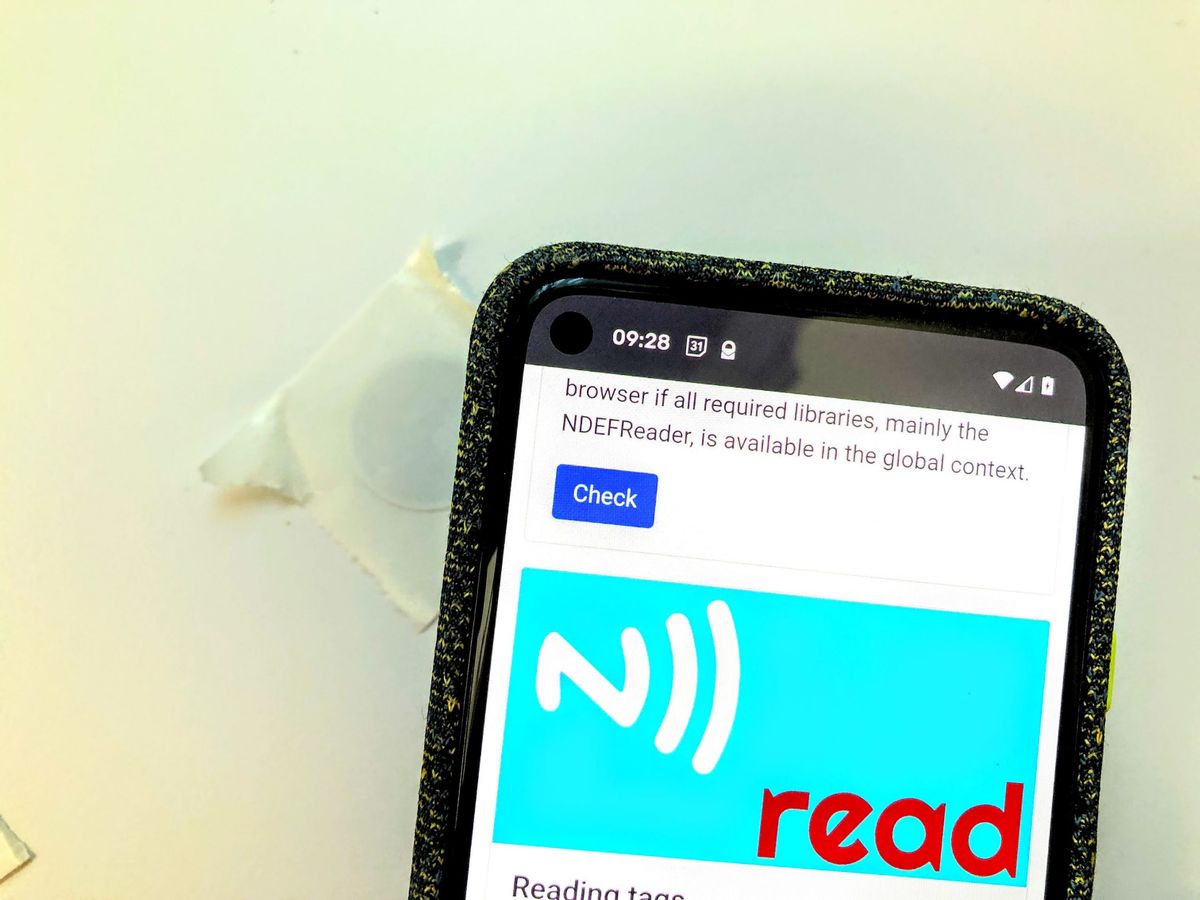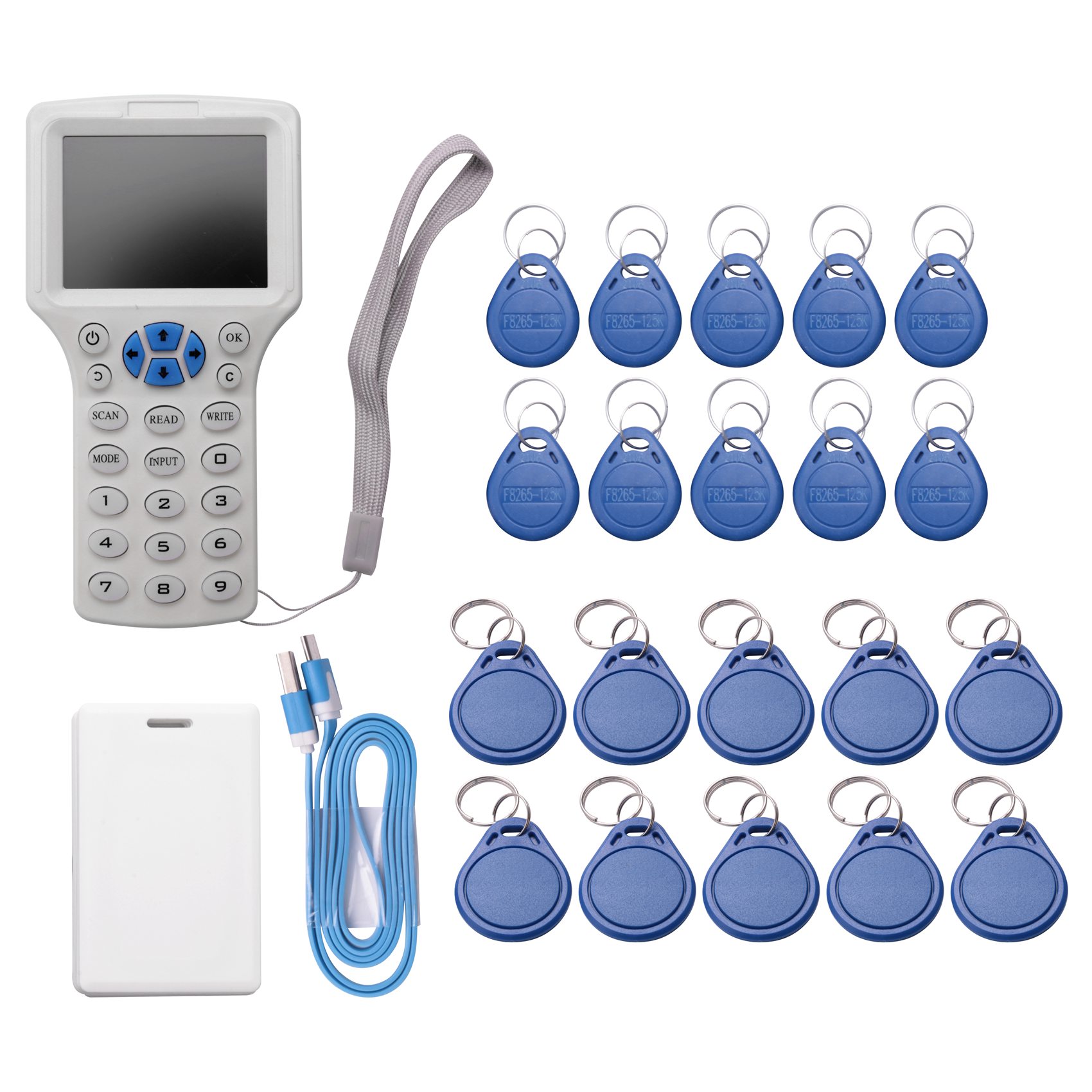Introduction
Near Field Communication (NFC) technology has become increasingly popular in recent years, enabling devices to establish communication over short distances by simply tapping or bringing them close together. NFC tags, in particular, have gained attention for their ability to store and transmit data to compatible devices. These small, versatile tags can be found in various settings, including public places, retail stores, and even personal belongings.
However, despite the convenience and widespread use of NFC technology, there are instances where users may encounter difficulties in reading NFC tags. This can be frustrating, especially when you are relying on NFC functionality for tasks such as making payments, accessing information, or connecting devices.
In this article, we will explore common reasons why you might not be able to read NFC tags and provide troubleshooting tips to address these issues. By understanding the potential obstacles and learning how to overcome them, you can make the most of NFC technology and ensure seamless interaction with NFC tags.
Now, let’s delve into the world of NFC technology and uncover the factors that could prevent you from reading NFC tags.
What are NFC Tags?
NFC tags are small, unpowered devices that use Near Field Communication (NFC) technology to transmit data wirelessly to compatible devices. They typically come in the form of stickers, cards, or even embedded in everyday objects such as posters or promotional materials.
These tags contain an integrated circuit and an antenna that allows them to communicate with NFC-enabled devices, such as smartphones, tablets, and smartwatches. When an NFC-enabled device is brought close to an NFC tag, the two devices establish a connection and exchange information.
NFC tags are programmed with specific data that can be read by compatible devices. Common uses for NFC tags include:
- Quickly connecting to Wi-Fi networks: NFC tags can store network credentials, allowing users to easily connect their devices to a specific Wi-Fi network with just a tap.
- Making payments: NFC tags can be used for contactless payments, enabling users to make purchases by simply tapping their devices on a payment terminal.
- Triggering actions on devices: NFC tags can be programmed to initiate specific actions on an NFC-enabled device, such as opening an app, adjusting settings, or playing media.
- Providing information and marketing: NFC tags can be placed on promotional materials, products, or museum exhibits to provide additional information to users who tap their devices on the tags.
The simplicity and versatility of NFC tags make them suitable for a wide range of applications, from enhancing user experiences in retail environments to streamlining access to information in public spaces.
Now that we have a basic understanding of what NFC tags are, let’s explore how they work and establish communication with compatible devices.
How do NFC Tags work?
NFC tags work on the principle of electromagnetic induction, enabling them to send and receive data wirelessly. The communication between an NFC tag and an NFC-enabled device occurs when the two devices are brought close together, typically within a few centimeters.
When an NFC-enabled device approaches an NFC tag, the device’s NFC reader sends out a radio frequency signal that energizes the tag’s antenna. This energy is then used to power the integrated circuit within the tag. Once powered, the tag can communicate with the device by modulating and demodulating the radio frequency signal.
The data stored on an NFC tag can be read and overwritten by compatible devices. This data can include various types of information, such as URLs, contact details, app and settings configurations, or simply a unique identifier.
There are different types of NFC tags, categorized by the amount of storage and the level of complexity in their functionality. The most common types are:
- NFC Forum Type 1 and Type 2: These tags offer low storage capacity and are typically used for simple applications such as accessing URLs or triggering actions on smartphones.
- NFC Forum Type 3: These tags have a higher storage capacity and are suitable for more complex applications that require additional data storage and retrieval.
- NFC Forum Type 4: These tags offer the highest storage capacity and support advanced security features, making them suitable for applications such as payments and secure access systems.
It’s important to note that NFC tags require both the tag and the device to be within close proximity and properly aligned for successful communication to occur. The NFC reader in the device needs to be able to detect and decode the data from the tag, which is then processed by the device’s operating system or specific apps.
Now that we understand how NFC tags work, let’s explore some common reasons why you might face difficulties in reading NFC tags.
Common Reasons for Not Being Able to Read NFC Tags
While NFC technology has become more widespread, there can be instances where you may encounter difficulties in reading NFC tags. Here are some common reasons why you might not be able to read NFC tags:
- Incompatibility with Device: Not all devices are NFC-enabled or support all types of NFC tags. Ensure that your device has NFC functionality and is compatible with the specific NFC tag you are trying to read.
- NFC Functionality Turned Off: Make sure that NFC functionality is enabled on your device. NFC is typically found in device settings or quick access settings menu.
- Physical Obstacles or Interference: Metal surfaces or objects can interfere with NFC communication. Remove any physical barriers between the device and the NFC tag for better connectivity.
- Damaged or Defective NFC Tags: If an NFC tag is physically damaged or defective, it may not be readable. Inspect the tag for any visible damage and try a different tag if needed.
- Insufficient Power or Battery: Low battery levels or power-saving settings on your device can affect NFC functionality. Ensure that your device has sufficient power to establish a connection with the NFC tag.
- Incorrect Placement of NFC Tag: NFC tags need to be brought in close proximity to the NFC reader in your device. Ensure that the tag’s antenna is properly aligned with the reader for successful communication.
- Security or Permission Restrictions: Some NFC tags may require specific app permissions or security measures. Check if any necessary permissions or settings need to be adjusted to access the data on the tag.
- Software or Firmware Issues: Outdated or incompatible software or firmware on your device can impact NFC functionality. Keep your device’s operating system and apps up to date for optimal performance.
- Reader or App Compatibility: Not all NFC tag readers or apps support all types of NFC tags. Ensure that you are using a compatible reader or app that is capable of reading the specific tag you are trying to access.
- Other Environmental Factors: Factors such as electromagnetic interference, extreme temperatures, or radio frequency congestion in the area can affect NFC communication. Try moving to a different location or adjusting your device’s environment.
By considering these common reasons, you can troubleshoot and overcome any issues that may arise when reading NFC tags. In the next section, we will explore some troubleshooting tips to help enhance your NFC experience.
Incompatibility with Device
One of the common reasons for not being able to read NFC tags is the incompatibility between your device and the specific NFC tag you are trying to read. Not all devices are equipped with NFC functionality, and even if they are, they may not support all types of NFC tags.
To ensure compatibility, check if your device has NFC capabilities. Most modern smartphones, tablets, and smartwatches are equipped with NFC, but it’s always best to verify in your device’s specifications or settings. Additionally, different devices support different types of NFC tags, such as NFC Forum Type 1, Type 2, Type 3, or Type 4 tags. Make sure your device is compatible with the specific tag you are attempting to read.
If your device does not have NFC functionality or is not compatible with the type of NFC tag you have, you may need to consider alternative methods or devices to interact with the desired NFC functionality. In such cases, external NFC readers or dedicated NFC-enabled devices may be necessary.
Remember that compatibility can also extend to the software or firmware of your device. While the hardware might have NFC capabilities, outdated or incompatible software can hinder NFC functionality. Ensure that your device’s operating system and relevant apps are up to date to maximize compatibility.
In summary, if you are unable to read NFC tags, the first step is to check the compatibility between your device and the NFC tag. Ensure that your device has NFC functionality and is compatible with the specific type of NFC tag you are using. If your device is incompatible, consider alternate methods or devices to achieve the desired NFC functionality.
NFC Functionality Turned Off
Another common reason why you may not be able to read NFC tags is that the NFC functionality on your device is turned off. NFC is typically found in the settings menu of your device and can be easily toggled on or off.
To check if NFC functionality is turned on, navigate to your device’s settings and look for “NFC” or “Near Field Communication” options. The location of this setting may vary depending on your device and operating system.
If the NFC option is disabled, simply toggle it on. Once NFC is enabled, your device should be able to detect and interact with NFC tags in close proximity.
It’s worth noting that some devices may have additional settings related to NFC, such as “Android Beam” or “Tap and Pay.” These options may need to be enabled as well to fully utilize NFC functionality, depending on the specific tasks you intend to perform with NFC tags.
On certain devices, NFC functionality may be automatically disabled when the device enters power-saving mode. If you are experiencing issues reading NFC tags, ensure that your device has sufficient power and is not in power-saving mode.
By verifying that NFC functionality is turned on and adjusting any additional NFC-related settings, you can ensure that your device is ready to read NFC tags. With NFC enabled, you can tap into the full potential of NFC technology and experience seamless interaction with compatible tags.
Physical Obstacles or Interference
Physical obstacles and interference can significantly impact the ability to read NFC tags. The presence of metal surfaces, objects, or other materials can weaken or disrupt the electromagnetic field required for NFC communication.
When attempting to read an NFC tag, ensure that there are no physical barriers between your device and the tag. If the tag is embedded in a metal object or placed near metal surfaces, it may interfere with the signal transmission. Try to position your device in such a way that it has a clear line of sight to the NFC tag.
In addition to metal surfaces, certain materials or objects with high-density composition, such as thick walls, electronic devices, or even water, can also cause interference. Avoid placing NFC tags in areas where these materials are present to ensure optimal signal strength and readability.
It’s important to consider the positioning of both your device and the NFC tag. Some devices have the NFC reader located in specific areas, such as the back or the sides. To establish successful communication, make sure the NFC tag’s antenna is properly aligned with the NFC reader on your device.
Furthermore, external sources of electromagnetic interference, such as other electronic devices or radio frequency congestion, can affect NFC communication. If you are in a crowded and busy area with multiple NFC-enabled devices in close proximity, it might disrupt the signal quality. Consider moving to a different location or adjusting the environment to minimize interference.
By eliminating physical barriers and minimizing interference, you can enhance the readability of NFC tags. Ensuring a clear and unobstructed path between your device and the NFC tag improves the chances of successful communication and a seamless NFC experience.
Damaged or Defective NFC Tags
A possible reason for not being able to read NFC tags is that the tag itself may be damaged or defective. NFC tags can be vulnerable to physical damage due to factors such as improper handling or exposure to extreme temperatures or moisture.
Inspect the NFC tag visually and check for any visible signs of damage, such as cracks, dents, or scratches. Even minor damage to the tag’s surface can result in loss of data or hinder communication with your device. If you find any damage, try using a different NFC tag to see if it resolves the issue.
In some cases, NFC tags may become defective over time or due to manufacturing flaws. If you recently purchased or received the NFC tags and are unable to read them, it’s possible that they are defective. Contact the manufacturer or retailer to inquire about possible replacements or refunds.
It’s important to note that NFC tags, like any electronic device, have a limited lifespan. Over time, the internal components or the adhesive used to attach the tag may deteriorate, impacting their performance. Consider replacing older NFC tags if they consistently fail to be read by your device.
Additionally, ensure that you are using NFC tags that are compatible with the type of NFC reader in your device. Different tags have different specifications, including the amount of data they can store and the communication protocols they support. Verifying compatibility between the tag and the reader can help avoid issues related to functionality.
By examining the condition of NFC tags and replacing or repairing damaged or defective ones, you can improve the chances of successfully reading NFC tags. Remember to handle NFC tags with care and avoid exposing them to conditions that may compromise their functionality.
Insufficient Power or Battery
Insufficient power or a low battery level on your device can impede the functionality of NFC and prevent the successful reading of NFC tags. NFC requires a sufficient power supply to establish communication with the tag and exchange data.
If you are experiencing issues reading NFC tags, first check the battery level of your device. If the battery level is low, charge your device to ensure that it has enough power to support NFC functionality. Additionally, consider disabling power-saving modes or features that may limit the power output of your device.
It’s worth noting that some devices may automatically disable certain features, including NFC, when the battery level drops below a certain threshold. This is done to preserve battery life and ensure the essential functions of the device are maintained. To ensure NFC functionality is available, it’s advisable to keep your device’s battery level above the minimum required threshold.
Moreover, while using NFC, certain tasks or apps may consume more power than normal. If you notice a sudden drop in battery level while utilizing NFC, it’s possible that the NFC feature is contributing to the power drain. In such cases, it may be necessary to conserve battery by limiting the use of NFC or other power-intensive functions.
Always ensure that your device has enough power and battery capacity to maintain a stable NFC connection. By doing so, you increase the likelihood of successful NFC tag reading and enable seamless interaction with NFC-enabled devices and applications.
Incorrect Placement of NFC Tag
The placement of the NFC tag in relation to the NFC reader on your device plays a crucial role in successfully reading the tag. Incorrect placement or misalignment can result in communication issues and hinder the reading process.
When attempting to read an NFC tag, ensure that the tag’s antenna is in close proximity to the NFC reader on your device. The NFC reader is generally located in specific areas, such as the back, sides, or front of the device. Refer to your device’s user manual or search online for the exact location of the NFC reader.
Aligning the tag’s antenna with the NFC reader is essential for establishing a stable connection. Make sure the tag is positioned within the reader’s range and that there are no physical barriers obstructing the connection.
In some cases, NFC tags need to be tapped or brought in contact with the NFC reader to initiate the communication process. If you are unsure about the correct placement or method for reading a particular NFC tag, refer to the instructions provided by the tag’s manufacturer or the associated app.
It’s also useful to note that NFC tags have different read ranges depending on their type. Some tags may need to be closer to your device, while others have a wider range of interaction. Understanding the capabilities and specifications of the NFC tags you are using can help you determine the optimal placement for successful reading.
By ensuring the correct placement and alignment of NFC tags with the NFC reader on your device, you can improve the chances of reading the tags accurately. Experiment with different positions and techniques to find the most effective way to read NFC tags with your specific device.
Security or Permission Restrictions
Security measures and permission settings on your device can occasionally prevent the successful reading of NFC tags. This is particularly true if the NFC tag you are trying to access contains sensitive or restricted information.
Some NFC tags may require specific app permissions to read their contents. By default, your device may restrict access to certain data stored on NFC tags to protect your privacy and security. To overcome this issue, review the permissions settings for the app you are using to read NFC tags and ensure that the necessary permissions are granted.
Additionally, some NFC tags may have security features, such as password protection or encryption. These tags require the user to provide the correct credentials or use specific apps with appropriate access rights to read the data on them. If you are unable to read a secured NFC tag, ensure that you have the required authentication or authorization credentials.
It’s worth mentioning that certain devices or operating systems may have default settings that limit or disable the reading of NFC tags for security purposes. If this is the case, you may need to adjust your device’s settings to allow NFC tag reading. Verify your device’s security or NFC settings and make any necessary modifications.
If you are deploying NFC tags in a business or public setting, be aware that there may be additional security measures in place that restrict access to the tag’s contents. Consult with the appropriate administrators or personnel to ensure that you have the required permissions or credentials to read the NFC tags.
By understanding and adjusting the security and permission settings on your device, you can overcome any restrictions that may prevent successful reading of NFC tags. This allows you to safely access and interact with the information stored on NFC tags while maintaining the necessary security protocols.
Software or Firmware Issues
Software or firmware issues on your device can interfere with the ability to read NFC tags. Outdated or incompatible software versions may cause inconsistencies in NFC functionality and prevent successful tag reading.
It is crucial to keep your device’s operating system and relevant apps up to date. Manufacturers often release software updates, which can include bug fixes, performance improvements, and enhancements to NFC functionality. Check for any available updates for your device’s software and install them to ensure that you have the latest features and bug fixes related to NFC technology.
In some cases, a specific app you are using to read NFC tags might have compatibility issues or require an update. Check if there are any updates available for the app and install them to ensure optimal performance. If the issues persist, consider trying a different app that is known for its compatibility with NFC tags.
Occasionally, firmware updates for your device’s NFC chip may be required. Firmware updates can address compatibility issues and improve performance when interacting with NFC tags. Check if your device’s manufacturer provides firmware updates for the NFC chip, and follow the instructions to install them, if available.
If you recently installed a new app or made significant changes to your device’s software configuration, it is possible that these changes have disrupted the NFC functionality. Consider uninstalling or disabling any recently installed apps or reverting to a previous software configuration to see if it resolves the issue.
It’s also worth mentioning that certain devices may have specific NFC-related settings that can impact tag reading. Pay attention to these settings and ensure they are properly configured to support successful NFC tag reading.
By addressing software or firmware issues on your device, you can improve the stability and compatibility of NFC functionality. Keeping your device’s software up to date, checking for app updates, and addressing compatibility issues can help resolve any software-related obstacles that may hinder the reading of NFC tags.
Reader or App Compatibility
The compatibility between the NFC tag reader or app you are using and the NFC tag itself can have a significant impact on the ability to read the tag successfully. Not all NFC tag readers or apps support all types of NFC tags, so it’s important to ensure compatibility to avoid reading issues.
When selecting an NFC tag reader or app, verify that it is designed to work with the specific type of NFC tag you have. Different NFC tags have varying specifications, including the communication protocols they use and the data storage capacity they offer. Choosing a reader or app that is compatible with your tag’s specifications can greatly improve the odds of successful reading.
If you are experiencing difficulties reading NFC tags with a specific app, make sure you have the latest version of the app installed. App updates often include bug fixes and improvements related to NFC functionality. Update the app and try again to see if the issues persist.
It’s also worth exploring alternative NFC tag reader apps in case the one you are currently using is not compatible with your tag. A different app might have better support for your specific NFC tag or offer additional features that improve the overall NFC reading experience.
Some NFC tag readers or apps may have limitations when it comes to reading certain types of NFC tags. For example, an app designed for NFC payments might not be able to read NFC tags that are solely meant for triggering actions or accessing URLs. Ensure that the reader or app you are using is capable of reading the specific type of NFC tag you are working with.
By utilizing an NFC tag reader or app that is fully compatible with your NFC tags, you can enhance the reading process and improve overall performance. Remember to check for app updates regularly and explore different options if compatibility issues persist.
Other Environmental Factors
Aside from the factors mentioned earlier, there are additional environmental factors that can affect the ability to read NFC tags. These factors may contribute to intermittent connectivity issues or reduced signal strength, making it difficult to establish a stable connection.
One factor to consider is electromagnetic interference (EMI) caused by nearby electronic devices. Devices such as microwaves, routers, or other smartphones can emit electromagnetic radiation that interferes with NFC signals. To minimize this interference, try moving away from crowded areas or turning off nearby electronic devices when attempting to read NFC tags.
Extreme temperatures can also impact NFC tag performance. In very hot or cold environments, the materials within NFC tags can expand or contract, potentially affecting the antenna’s position or the overall functionality of the tag. Avoid exposing NFC tags to extreme temperatures to maintain optimal performance.
Radio frequency (RF) congestion might occur in locations with a high density of NFC-enabled devices. In crowded areas, the high volume of RF signals can result in signal interference and reduced NFC reading capabilities. If possible, move to a less congested area or try reading the NFC tag at a different time to avoid RF congestion.
Additionally, the design and placement of NFC tags in certain objects or structures can affect their readability. Some objects or materials, such as metal or dense laminates, can attenuate or block NFC signals, resulting in poor tag reading. Choose the proper type and placement of NFC tags for the intended application to optimize performance.
Some NFC tags may have a specified read range. If you are attempting to read a tag beyond its maximum read range, the signal might not be strong enough to establish a connection. Ensure that you are within the specified read range when reading NFC tags.
Considering these environmental factors and making necessary adjustments can improve the reliability and performance of reading NFC tags. By creating an optimal environment for NFC communication, you can enhance the success rate of reading NFC tags and enjoy a seamless experience.
Troubleshooting Tips for Reading NFC Tags
When encountering difficulties in reading NFC tags, there are several troubleshooting tips you can follow to improve the situation. These tips can help you identify and resolve common issues that may hinder the reading process.
- Ensure NFC is enabled: Double-check that NFC functionality is turned on in your device’s settings menu.
- Verify compatibility: Confirm that your device is compatible with the specific type of NFC tag you are attempting to read.
- Check for physical obstacles: Remove any physical barriers, such as metal objects, that may impede NFC signal transmission.
- Inspect NFC tags: Check for visible damage or defects on NFC tags, and try using a different tag if necessary.
- Charge your device: Ensure your device has sufficient power to initiate and maintain NFC communication.
- Correctly position the NFC tag: Align the NFC tag’s antenna with the NFC reader on your device for optimal connectivity.
- Adjust permissions and settings: Verify that the app you are using to read NFC tags has the necessary permissions and adjust device settings as required.
- Update software and apps: Keep your device’s operating system and relevant apps updated to ensure compatibility and enhanced NFC functionality.
- Explore alternate apps: If issues persist with a specific app, try using a different NFC tag reader app that is known for compatibility.
- Consider environmental factors: Take into account factors such as electromagnetic interference, extreme temperatures, RF congestion, and tag placement.
By following these troubleshooting tips, you can overcome obstacles and improve the reading of NFC tags. It’s important to remember that NFC technology can vary across different devices and environments, so patience and experimentation may be required to achieve optimal results.
If the issues persist despite troubleshooting, it may be necessary to seek technical support or seek assistance from the manufacturer of your device or NFC tags for further guidance.
Conclusion
NFC technology and the use of NFC tags have revolutionized the way we interact with devices, access information, and make transactions. However, encountering difficulties in reading NFC tags can be frustrating. Throughout this article, we have explored common reasons for not being able to read NFC tags and provided troubleshooting tips to overcome these issues.
We’ve learned that compatibility with your device, NFC functionality being turned off, physical obstacles or interference, damaged or defective NFC tags, insufficient power or battery, incorrect placement of NFC tags, security or permission restrictions, software or firmware issues, reader or app compatibility, and environmental factors can all impact the successful reading of NFC tags.
By following troubleshooting tips such as enabling NFC functionality, adjusting permissions and settings, ensuring compatibility, checking for physical obstacles, and updating software and apps, you can improve the reading of NFC tags. It is also essential to consider environmental factors and be aware of any security measures or restrictions that may be in place.
Remember, NFC technology is continually evolving, and different devices and NFC tags may have unique requirements. Patience, experimentation, and ongoing learning are key to achieving the best results with NFC technology.
With a better understanding of how NFC tags work and the potential challenges you may encounter, you can maximize the benefits of NFC technology and enjoy seamless interactions with NFC tags. So whether it’s making payments, accessing information, or triggering actions, NFC tags provide a convenient and innovative way to connect with the digital world around us.









